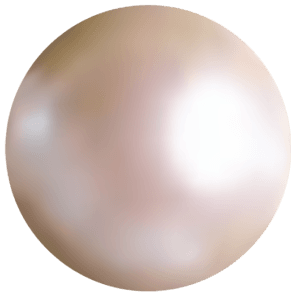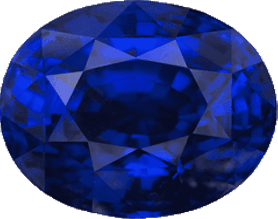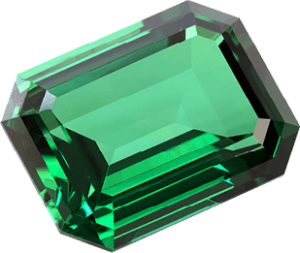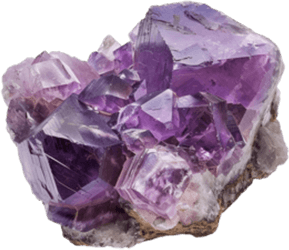Gemstones

Pearl: The Luminous Treasures of the Ocean
Overview: The Timeless Elegance of Pearls
A pearl is a luminous organic gemstone naturally formed within the soft tissue of living shelled mollusks, typically oysters or mussels. Unlike most gemstones, which are traditionally mined from the earth, pearls are created by nature itself. This unique process not only imbues them with an enduring charm but also makes them stand apart from other gemstones. Moreover, pearls are widely celebrated for their classic beauty and lustrous sheen, which has made them a beloved and timeless choice in high-end jewelry for centuries. Consequently, they have remained an iconic symbol of elegance and sophistication throughout history.
Properties of Pearls
Luster: The Glow That Captivates
One of the primary reasons pearls are so highly coveted is their exceptional luster. This refers to the way light reflects off their surface, creating a captivating glow. Depending on the quality, the luster can range from a soft, glowing sheen to a bright, metallic shine. As a result, pearls with a more intense luster are generally considered more valuable and thus more desirable. This intriguing quality is often the deciding factor when it comes to determining a pearl’s overall appeal in fine jewelry.
Shape: A Variety of Forms
While round pearls are undoubtedly the most sought-after, they are by no means the only variety available. Pearls come in a wide range of shapes, each offering its distinct charm. For instance, some pearls are oval, while others take on an irregular baroque shape, adding an element of uniqueness to each piece. Additionally, some pearls feature a graceful drop shape, further enhancing their versatility and beauty. Each shape, whether round or irregular, contributes to the pearl’s character, with baroque pearls being particularly appreciated for their one-of-a-kind nature and distinctiveness.
Color: A Spectrum of Shades
Another fascinating feature of pearls is their incredible range of colors. Pearls can be found in a spectrum of hues, from classic white and cream to more exotic and luxurious shades such as black, pink, and gold. The color of a pearl is determined primarily by the species of mollusk and the environment in which the pearl forms. Therefore, the diversity in color adds yet another layer of uniqueness to each pearl, making it even more coveted. This variety not only enhances the visual appeal but also provides an opportunity for personalization, allowing customers to select the perfect pearl to match their taste and style.
Surface: Smoothness and Perfection
When it comes to evaluating pearls, surface quality plays a crucial role in determining their overall value. Pearls with fewer imperfections or blemishes are widely regarded as being of higher quality. As a result, the smoother the surface, the more desirable the pearl becomes. In contrast, pearls with more noticeable imperfections are typically considered less valuable. Consequently, top-quality pearls are often virtually flawless, showcasing their inherent beauty, rarity, and exceptional craftsmanship. This flawless surface plays a vital role in their overall allure, elevating their status in the world of fine jewelry and making them a truly luxurious investment.
The History of Pearls
Pearls have been cherished for thousands of years. Ancient civilizations considered them symbols of wealth, and they were often reserved for royalty. For instance, the ancient Egyptians, Greeks, and Romans highly valued pearls, incorporating them into crowns and jewelry. As European explorers brought pearls back from the New World during the 16th century, their status was elevated even further, becoming highly sought after across Europe.
Types of Pearls
Akoya Pearls: Renowned for their classic round shape and lustrous shine, Akoya pearls are primarily farmed in Japan and China. These pearls are not only known for their impeccable quality but also their exquisite finish, making them a popular choice among fine jewelry enthusiasts.
South Sea Pearls: Larger and rarer than many other varieties, South Sea pearls typically come in white or golden hues. They are primarily farmed in Australia, the Philippines, and Indonesia. Due to their size and color, these pearls are often regarded as a symbol of luxury, embodying sophistication and timeless beauty.
Tahitian Pearls: Tahitian pearls, in particular, stand out for their unique dark colors, which include shades of green, purple, and black. Grown around the islands of French Polynesia, these pearls offer an exotic flair that makes them perfect for adding a touch of mystery and elegance to any jewelry collection.
Freshwater Pearls: In contrast, freshwater pearls are cultured in freshwater lakes and rivers, mainly in China. While they tend to be more affordable than their saltwater counterparts, freshwater pearls still possess immense beauty and are often used in a variety of jewelry pieces due to their versatility.
Famous Pearls
La Peregrina: One of the most famous pearls in history, La Peregrina was once owned by Spanish royalty. Today, it is part of Elizabeth Taylor’s iconic collection. The pearl’s exceptional beauty and rich history make it a prized possession for any jewelry lover.
The Pearl of Lao Tzu: Known for its extraordinary size, The Pearl of Lao Tzu is believed to be the largest natural pearl ever discovered. Weighing an astonishing 14 pounds, it remains a rare and remarkable treasure, further cementing its place in history as one of the most unique pearls ever found.
Uses of Pearls
Pearls are not only beautiful but also incredibly versatile. They are commonly used in necklaces, earrings, bracelets, and rings, serving as timeless staples in the world of fine jewelry. Moreover, they are often incorporated into both traditional and modern designs, appreciated for their ability to add elegance and sophistication to any piece. Whether as part of a classic string of pearls or an innovative contemporary design, these gems continue to represent beauty, class, and luxury.
Care and Maintenance
- Pearls are delicate and should be handled gently. Avoid exposing them to harsh chemicals, including perfume, hairspray, and cleaning products.
- Clean pearls with a soft cloth, and store them in a fabric pouch or lined box to avoid scratches.
- Pearls should be worn regularly to maintain their luster, as they naturally absorb oils from the skin.
- Learn more about Jewelry care.
Fun Facts
- Pearls are the only gemstones that come from a living organism.
- The ancient Romans believed that pearls were tears of joy from the gods.







